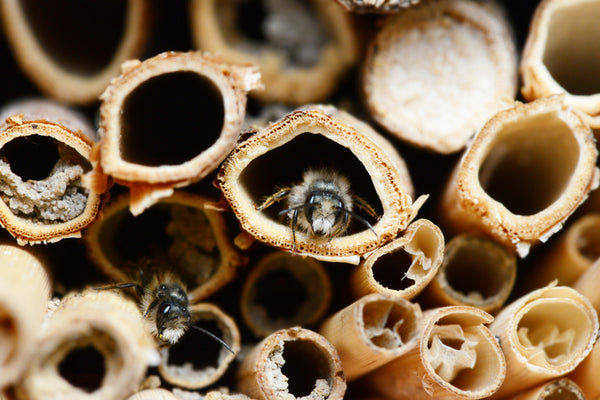Here at PlanBee we love bees. They are super important pollinators who are responsible for 75% of the world's crops and ⅓ of the food we eat.
Did you know…? Bees are so awesome they have their own day: 20th of May is World Bee Day!
World Bee Day is celebrated internationally on May 20 each year. This day was chosen because Anton Janša, the pioneer of beekeeping, was born on May 20th 1734. The aim of the day is to raise awareness of the role of bees and other pollinators in the ecosystem. Slovenia held the first World Bee Day in 2017.
World Bee Day is important because all around the world bees are facing threats, including habitat loss, climate change, toxic pesticides and disease. Nearly 1 in 10 of Europe’s wild bee species are facing extinction.
UK Bee Species
There are over 250 species of bee in the UK. 24 of the UK species are Bumblebees! The most common types of bees in the UK are:
- Bumblebees
- Honey bees
- Mining bees
- Mason bees
- Common carder bees
Solitary or social bees
Bee species are either solitary or social. This means they either live on their own or in a group called a colony.
Solitary bees do not swarm. Social bees do swarm. Bees swarm when one colony of bees splits into two or more colonies. This normally happens in the spring. The swam of bees temporarily moves to a new location while scout bees look for a new nesting site. When the scout bees agree on a new nesting site they guide the swarm of bees to it.

Most bees are solitary, this means they live on their own. There are over 250 kinds of solitary bee. Solitary bees include Bumblebees, Miner bees, and Mason bees.
The majority of solitary British species nest in the ground, excavating their own nest.
A number of solitary species also nest above the ground. They will often use old holes or bee hotels. They seal the nests with a saliva like substance, mud, chewed leaves, resin or sections of leaves which they cut with their jaws.
Three solitary species of British bees nest in snail shells. They use chewed up leaves to seal off each section in the empty nest shells and often camouflage the shell in some way.
Social bees live in hives and make wax and honey. Honey bees and bumblebees are social bees. Honeybees are very sociable and can live in groups of up to 50,000 in a single hive. Bumblebees are also social, but they live in smaller groups of 50-150. Honeybees and bumblebees both have one queen bee in the hive who lays all of the eggs for the group.

How can I help bees?
There are lots of ways you can create a bee-friendly space near you. Here are our top 5 suggestions.

-
To help bees you can grow a range of plants that they like. Lots of plant labels now have a bee on them to help you identify the best ones for bees.

-
Try to always have flowers blooming in your garden. This Gardeners World list is a good place to find flowers that bloom each month.

-
Create a bee hotel and leave an area of soil the bees can dig their homes in.

-
Provide an area where bees can safely drink.

-
Grow organic plants - this means avoiding using pesticides in your garden.
Did you know…? Some plants attract aphid predators. Aphid predators include ladybirds, hoverfly larvae, earwigs and birds. They are all great natural pest controllers. So what are you waiting for, plant fennel to attract hoverflies and ladybirds, and let them deal with the greenfly.
Brilliant Bee Facts
- There are 20,000 species of bees in the world! Yes you read that right, 20,000!
- Bees are the top four pollinators in the world
- Wild Bees
- Commercial Bees
- Bumble Bees
- Other Bees
- Bees range in size from 2-40mm.
- The smallest bee is the Perdita Minima bee. It is 2mm long and is found in North America. This is a solitary bee that lives in sandy desert soils.
- The largest bee is the Megachile Pluto or Wallace’s Giant Bee. It is found in Indonesia. This bee has a wingspan of 60mm and a body length of 40mm. It was thought to be extinct for a long time and is now on the vulnerable list.
- Bees live on every continent except Antarctica.
If you would like to know more about bees, take a look at lesson 2 of Why is Nature Special and if you would like to make a bug hotel check out lesson 3 of Linking Local Wildlife.







